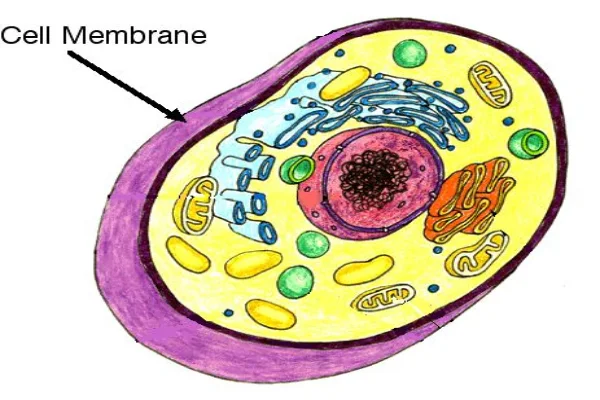In the vast universe of cellular biology, the animal cell membrane stands out as a marvel of intricate design and functionality. Serving as the boundary between the cell's interior and the extracellular environment, this dynamic structure plays a pivotal role in regulating cellular processes, maintaining homeostasis, and facilitating communication with the external world.
Lipid Bilayer Architecture
At its core, the animal cell membrane boasts a lipid bilayer, a fundamental structural feature comprised primarily of phospholipids. These amphipathic molecules arrange themselves spontaneously into two layers, with their hydrophilic heads orienting towards the aqueous environments inside and outside the cell, while their hydrophobic tails align inward, shielding themselves from water.
Proteins: Gatekeepers And Signaling Messengers
Embedded within the lipid bilayer are an array of proteins, each with a specific function critical to the cell's survival and function. Integral membrane proteins span the membrane, serving as gatekeepers for the selective passage of ions and molecules. Channel proteins form pores, allowing the rapid diffusion of specific substances, while carrier proteins facilitate the transport of molecules against their concentration gradients through conformational changes.
Beyond their transport roles, membrane proteins also play a crucial role in cellular signaling. Receptor proteins, for instance, serve as molecular antennae, detecting external signals such as hormones or neurotransmitters and transmitting them into the cell via signal transduction pathways, ultimately eliciting a cellular response.
Fluidity And Flexibility
One of the most remarkable aspects of the animal cell membrane is its fluidity and flexibility. The lipid bilayer is not a static structure; rather, it exhibits dynamic properties, with phospholipids and proteins able to move laterally within the membrane. This fluidity is essential for various cellular processes, including membrane fusion during vesicular transport and the formation of specialized membrane structures such as lipid rafts.
Cell-Cell Interactions And Adhesion
Animal cells often exist in complex multicellular environments, necessitating mechanisms for cell-cell interactions and adhesion. Adhesion proteins, such as integrins and cadherins, facilitate the attachment of cells to one another and to the extracellular matrix, forming tissues and organs with structural integrity and cohesion. Tight junctions and gap junctions further regulate the passage of molecules between neighboring cells, ensuring proper tissue function and barrier formation.
Defense And Protection
The animal cell membrane also serves as a frontline defense against external threats. Glycoproteins and glycolipids on the cell surface participate in immune recognition and response, enabling the cell to distinguish between self and non-self and mount appropriate defenses against pathogens. Additionally, the membrane's impermeability to large molecules and toxins helps protect the cell from harmful substances present in the environment.
Dynamic Regulation And Adaptation
Crucially, the composition and properties of the animal cell membrane are not fixed but subject to dynamic regulation and adaptation. Cells can modulate membrane fluidity by altering the composition of lipids and adjusting the abundance and activity of membrane proteins in response to changing environmental conditions or cellular needs.
In conclusion, the animal cell membrane epitomizes the elegance of biological architecture, seamlessly integrating structure and function to support the intricate machinery of life. Its versatility, adaptability, and multifaceted roles underscore its significance as a cornerstone of cellular biology and a focal point for scientific inquiry and exploration.
